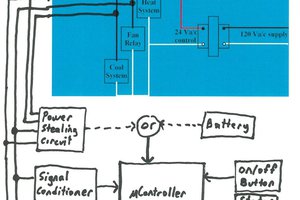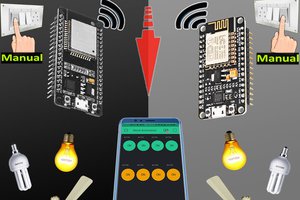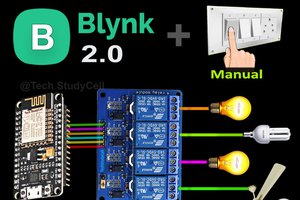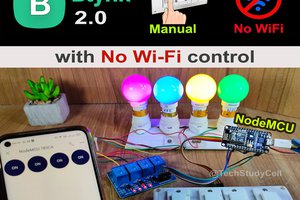The in-wall switch module has a custom PCB mounted inside a 3D printed shell, and includes a 120 VAC to 5 VDC switcher, a relay, and a Spark Core microcontroller with Wi-Fi. The prototype uses a mechanical switch for direct switching but the goal is to make that a capacitive proximity detection sensor by the end of the project. It all fits in a standard US in-wall outlet box. This module and its SW are working now. Warning - all of this was designed considering voltage creepage and circuit separation of high voltage and low voltage circuits and is believed to be completely safe but keep in mind none of this is UL approved.
The Wi-Fi enabled inline switch provides Wi-Fi control of plugged in lights or appliances. This module uses the same PCB as the light switch above but has an enclosure akin to a low wattage power brick. Power in is via a 3 prong IEC cord. Power out is via a standard US 120 VAC NEMA plug. The module is designed to support switching a full 15 amps (traces and ounces of copper are there). This module and its SW is working now.
The 16 station Sprinkler control PCB uses the 24VAC input for the sprinkler solenoids to power itself, and drive the sprinklers based on control data from an Android app. This module has been bread boarded and works and is now being tested. It will be packaged in a waterproof commercially sourced enclosure. The Android app uis about half done.
The landscape lighting control uses several inline switch modules along with 12VAC transformers to control the LED landscape lighting.
On the software side, Android apps have been developed using MIT’s App Inventor 2 graphical programming language (App Inventor was started at Google and picked up by MIT). It is relatively easy to use and allows you to create okay looking apps without knowing any Java or Android internals (I do not know Java or Android). There are great tutorials for it that provide excellent sample applications.
I started this project off simply because I needed to control things from afar at a vacation home. But might as well submit it for the Hackaday prize. And hopefully some of you will find the circuits, enclosure designs, and apps useful. Should begin posting files etc in the next week or so.
 Joe Menard
Joe Menard

 Quinn
Quinn
 Subhajit
Subhajit

I am starting on a landscape lighting project. I am hoping to use an Arduino.